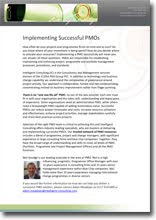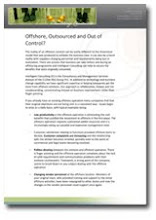The good news
According to Markit’s monthly Report on Jobs, there were 1.86 million unemployed people in the UK at the end of 2014; that’s 97,000 lower than in September 2014 and 486,000 less than for the year before. Though this is a significant number it is a similarly significant drop, greater than anyone expected this soon in UK PLC’s climb out of recession. On top of this, a recovery this strong and sustained should help to encourage ‘consumer confidence’, according to Bernard Brown (Partner & Head of Business Services at KPMG), which will accelerate the rate of recovery even further.
The catch
Unfortunately, we’re paying for it with the accompanying skills shortage which has been the theme of the 2015 labour market so far. The competition between employers for skilled staff is pushing salaries up at a strong pace, and a feeding frenzy has begun for the limited number of skilled candidates currently on the job market. This deficit is greatest in the Engineering and IT sectors ‘where the demand/supply mismatch is particularly prevalent’ (Brown). The reasons for the lack of qualified engineers could have roots in the outdated attitude that somehow apprenticeships are less valuable than a university degree, although this is dissolving as more and more apprenticeships are being offered. Of course it’s also very likely, unfortunately, that this boils down to the poor efforts to encourage girls into STEM subjects at an early age; if we insist on giving our daughters dolls instead of Lego or Scaletric, of course we have only a fraction of the engineers we could have.
The statistics
February gave us the fastest rise in permanent placements in four months, and contract placements increased at their sharpest rate since last September. Compared to other UK regions, the employment rate in the UK was at its highest in the South East (76.5%) and lowest in Wales (69.2%). The highest unemployment rate was in the North East (8.0%) and lowest in the South West (4.5%).
The approach
As video interviews and sourcing candidates via social media becomes more and more common, it’s clear that the hiring process has embraced technology. The report shows that the amount businesses are investing in internet-based recruitment continued to rise in Q3 2014. Although the rate has slowed to its lowest since Q1 2013, it is still climbing; 29% of candidates now use social media as their primary tool for job seeking, and 92% of companies use or plan to use social media for recruiting, so it’s no surprise that the number of internet-based recruiting continues to rise.
The silver lining
Encouragingly, Markit’s latest Household Finance Index (HFI) survey has shown that concerns over job security continued to fade in February, reaching their lowest point since the survey began in February 2009. Coupled with the consumer confidence we are expecting, this could mean that people will be more likely to change jobs, which could in turn cause candidate availability to rise. What’s more, this has corresponded with rising levels of workplace activity as the productivity puzzle begins to be solved.
So the cycle of the labour market continues to turn full circle. This means of course that we will at some point be back at the lowest point on the wheel, but for now let’s make the most of the climb to the top.







No comments:
Post a Comment